IJCRR - 5(5), March, 2013
Pages: 01-06
Date of Publication: 22-Mar-2013
Print Article
Download XML Download PDF
ASSESSMENT OF ENVIRONMENTAL QUALITY IN HARWAN AREA OF SRINAGAR DISTRICT (J&K), USING LICHENS AS BIO-INDICATORS
Author: Asma Hussan, G. A. Bhat, Mukhtar Ahmad Sheikh
Category: General Sciences
Abstract:The present study deals with the monitoring of lichens in a sub-urban area, Harwan, free from any direct polluting source was done with the aim that how air quality of area can be assessed using lichens as indicator and establishing the fact that how cleaner environment supports better diversity and density of lichens. The variety and variability data on Lichen species was collected and correlated with the air analysis data that was obtained using High volume Air Sampler. Analysis of air quality in the air was based on determining fraction of SPM (Suspended Particulate Matter), RSPM (Respirable Suspended Particulate Matter), NRSPM (Non-Respirable Suspended Particulate Matter), SO2 (Sulphur dioxide) and NO2 (Nitrogen dioxide) on seasonal basis i.e spring, summer and winter season on six (6) hourly basis. Quadrats of 25cm x 25 cm size, three on each tree, were laid from base to chest height for recording the data on frequency, density and abundance of lichens growing on the selected trees. Chlorophyll analysis, pH of host trees and water holding capacity was determined The study revealed the occurrence of 14 species of lichens belonging to 11 genera and 5 families. The air quality parameters were generally found within permissible limits with slight variation in different seasons. The data on the quantitative parameters i.e frequency, density and abundance of lichen species showed good values. Analysis of data further revealed that chlorophyll content of species is quite good in the area. The present communication thus serves as baseline record regarding the level of various pollutants including particulate matter and the number of lichen species for conducting biomonitoring studies in future.
Keywords: Lichens, Biomonitoring, Environmental Quality, Harwan, Kashmir.
Full Text:
INTRODUCTION
Lichens comprise a unique group of plant that consists of two unrelated organism, a fungus and an alga, growing together in a close symbiotic association. Lichens, being widespread, perennial, stable, long living organisms and more sensitive species than rest of the plants are nowadays increasingly used as terrestrial biomonitors and bioindicators of air pollution worldwide. They together with mosses form dominant organisms in ecosystem covering over 10% of the earth terrestrial habitats, particularly at higher elevations (Nash and Egan, 1988). Lichens are bio-indicators of air pollution and can be used to test the ecological impacts of emissions from different sources of sources of pollution (Showman, 1975; Will-Wolf, 1980 and Murphy et al. 1999). Lichen diversity is an excellent indicator of pollution by phytotoxic gaseous substances and respond relatively fast to deterioration in air quality, due to lack of cuticle, lichen absorbs both gases and dissolved substances through their surface (Roa and de Blanc, 1965). Lichens with specific biological structures are known as the best bioindicator organisms of air pollution, due to susceptibility of species to pollutants, especially sulphur dioxide (Saxena et al. 2007). Lichens have sensitivity, both physiological and ecological, to pollutants and therefore have been employed almost exclusively to monitor the extent or spread of air pollution particularly SO2 (Gries et al., 1997). Being both physiologically and ecologically sensitive to pollutants these are exclusively employed to monitor the air quality of the area. Lichen diversity is an excellent indicator of pollution and responds fast to deterioration in air quality. Environmental quality assessment using bioindicators approach offers some convincing advantages compared to direct analysis. The use of lichens as biomonitoring studies have gained increased acceptance in recent years. Lichen characters measured for air quality studies include morphological, physiological and population characteristics. Not only this but lichen biodiversity counts can be taken as estimates of environmental quality, with high values corresponding to good situations and low values indicating poor quality (Asta et al., 2002).Therefore a survey of lichen community in the area may provide us insight into the existing air quality in the area. Lichen exploration in the state initiated more exhaustively in fifties of the last century. Awasthi and Singh (1970) published a note on lichens of Jammu and Kashmir. Recently Negi and Upreti (2000); Sheikh et al. (2006 a and b, 2009); Charak et al. (2009) and Sheikh (2009) have worked on lichens and their phytosociological aspects from the different regions of the state. However, not much has been done on the biomonotiring aspect of the lichens except for Charak et al. (2009). The present study was under taken in Harwan area, with geographical coordinates of 34º 09' 34º 8" N latitude 74º 54' 08º 2" E longitude at an elevation of 1669 meters in Srinagar district of Jammu and Kashmir known for topographic position and weather patterns favoring lichen growth .The site is under Prunus persica, Poplus alba and Rubinia pseudocacia plantation with scattered Pear trees and was apparently not under receipt of any pollution from any direct source.
MATERIALS AND METHODS
To assess the air quality of area, High volume Air Sampler was used .Analysis of air quality in the air was based on determining fraction of SPM, RSPM, NRSPM, SO2 and NOx on seasonal basis i.e spring , summer and winter season on six (6) hourly basis. The result of air sampling was related to diversity of lichen flora in the area which was in turn determined by collecting lichens from the entire available substratum in the area. Quadrats of 25cm x 25 cm size, three on each tree, were laid from base to chest height for recording the data on frequency, density and abundance of lichens growing on the selected trees. The specimens were identified by studying the morphology, anatomy and chemistry. The recent literature of Awasthi (1988, 1991, 2000 and 2007), Divakar (2001) and Nayaka (2004) was consulted for identification of the lichen taxa. Thin layer chromatography was performed by the methods of Culberson (1972), Walker and James (1980) for lichen substances. Floristic analysis involved carrying out chlorophyll analysis of some lichen species by Arnon, s method. pH of host trees was determined by using digital pH meter. Similarly water holding capacity was determined by Billing and Drew (1938) method.
RESULTS AND DISCUSSION
The study revealed the occurrence of 14 species of lichens belonging to 11 genera and 5 families (Table 1). We found only two growth forms of lichens, namely crustose and foliose; fructicose lichens were not found in the study. The air quality parameters SPM, RSPM, NRSPM, SO2 and NO2 all were generally found within permissible limits with slight variation in different seasons that could be attributed to different weather phenomenon. Pollution free, dense and diverse tree species and stream flowing sideways in the area enables the surrounding area to have slightly higher water vapour content as such provides more shady, moist and humid climate which acts as a boon for lichen growth and thus this area shows lichen diversity amounting to total of 14 species. The lichens equally preferred tree substratum represented by 7 corticolous species i,e i.e Candelaria sp., Melanelia sp , Parmelia sp., Physcia sp. and Punctelia sp and rock substratum, represented by 6 saxicoluos species i.e. Flavoparmelia caperata (L.) Hale, Lecanora muralis var. muralis (schreber) Rabenh., Phaeophyscia orbicularis (Necker) Moberg., Physconia distorta (With.) Laundon., Xanthoparmelia sp., and Xanthoria elegans (Link) Th. Fr., while as one species Xanthoria parietina (L.) Th. Fr., shared both the habitats. Analysis of the table reveals all the quantitative parameters i.e frequency, density and abundance of species, all showed good values. Smith et al. (1993) also reported that by estimating lichen cover, the lichen can be used as bioindicator studies. Analysis of data further revealed that chlorophyll content of species is good is quite good in the area and there seems no apparent damage in them which indicates good air quality in the area (also supported by air analysis data).Variation in bark properties can also be reason for such rich diversity and density of lichen species in the area as is quite evident from pH analysis and water holding capacity of the host trees. These findings though region specific can be extrapolated for periodic monitoring of the lichen communities in relation to ongoing changes of the local land use.
CONCLUSION
Thus it was clear from the study, that the occurrence of 14 lichen species along with higher values for other ecological parameters can be attributed to better environmental conditions available that provide feasible conditions for diverse lichen growth and survival. The present communication thus serves as baseline record regarding the level of various pollutants including particulate matter and the number of lichen species for conducting biomonitoring studies in future
ACKNOWLEDGEMENTS
The authors are thankful to the Head, Department of Environmental Science, University of Kashmir for providing necessary laboratory facilities. Authors acknowledge the immense help received from the scholars whose articles are cited and included in references of this manuscript. The authors are also grateful to authors / editors / publishers of all those articles, journals and books from where the literature for this article has been reviewed and discussed
References:
1. Asta J, Ehardt W, Ferretti M, Fornasier F, Kirschbaum U, Nimis PL, Purvis OW, Pirintsos SA, Scheidegger C, Van Haluwyn C, Wirth V. Mapping lichen diversity as an indicator of environmental quality. In: Nimis PL, Scheidegger C, Wolseley P, editors. Monitoring with Lichens- Monitoring Lichens. NATO Science Series, Kluwer; 2002. p. 273-279.
2. Awasthi DD, Singh KP. A note on lichens of Kashmir. Curr Sci 1970; 39 : 441-442.
3. Awasthi DD. A key to Microlichens of India, Nepal and Sri Lanka. Biblioth. Lichenolog 1991; 40:1-337.
4. Awasthi DD. A key to Macrolichens of India and Nepal. J Hattori Bot Lab 1998; 65: 207- 302.
5. Awasthi DD. Lichenology in Indian Subcontinent. Bishen Singh Mahendra Pal Singh, Dehradun, India; 2000.
6. Awasthi DD. A Compendium of the Macrolichens from India, Nepal and Sri Lanka. Bishen Singh Mahendra Pal Singh, Dehra Dun, India; 2007.
7. Billing WD, Drew WB. Amer Midl Natur 1938;20:302-330.
8. Charak S, Sheikh MA, Raina AK, Upreti DK. Ecological impact of coal mines on lichens: A case study at Mogla coal mines Kalakote (Rajouri), J and K. J Appl Nat Sci 2009;1(1): 24-26.
9. Culberson. Improved conditions and new data for the identification of lichen products by a standardized thin layer chromatographic method. Journal of chromatography 1972;72:113-125.
10. Divakar PK. Revisionary studies on the lichen genus Parmelia sensu Lato in India. Ph.D. Thesis, Lucknow, University Lucknow, India; 2001.
11. Gries C, Sanz MJ, Romagni JG, Goldsmith S, Kuhn U, Kesselmeier J, Nash TH. The uptake of gaseous sulfur dioxide by nongelatinous lichens. New Phytologist 1997; 35:595-602.
12. Murphy KJ, Alpert P, Cosentino D. Local impact of a rural coal burning generating station on lichen abundance in a New England. Environmental pollution 1999; 105:349-354.
13. Nash TH, Egan RS. The biodiversity of lichens and bryophytes. In: Nash TH, Wirth V, editors. Lichen, Bryophytes and air quality. Bibl Carmer in der Gebr Borntra Verlag Berlin, Stuttgart. Lichenol.1988; 30: 11-22.
14. Nayaka S. Revisionary studies on the lichen genus Lecanora sensu Lato in India. Ph.D. Thesis, Dr. R.M.L. Avadh University Faizabad, India; 2004.
15. Negi HR, Upreti DK. Species diversity and relative abundance in lichens in Rumbuk Catchment of Hemis National Park in Ladakh. Curr Sci 2000;78(9):1105-1112.
16. Rao, de Blanc. Effect of SO2 on the lichen algae, with special references to chlorophyll. The Bryologist 1965; 69(1):69-74.
17. Saxena S, Upreti DK, Neeta S. Heavy metal accumulation in lichens growing in north side of Lucknow city, India. J Environ Biol 2007; 28: 49-51.
18. Sheikh MA. Taxonomic and ecological studies on lichens of some major forest sites of Jammu and Kashmir. Ph.D. Thesis, University of Jammu, Jammu, India; 2009.
19. Sheikh, MA, Upreti DK, Raina AK. An enumeration of lichens from three districts of Jammu and Kashmir, India. J Appl Biosci, 2006a; 32(2): 189-191.
20. Sheikh, MA, Upreti DK, Raina AK. Lichens diversity in Jammu and Kashmir, India. Geophytology 2006a; 36(1and2): 69-85.
21. Sheikh, MA, Upreti DK, Raina AK. Lichen flora of Surinsar-Mansar Wildlife Sanctuary, Jammu and Kashmir. J Appl Nat Sci 2009; 79- 81.
22. Showman RE. Lichen recolonization in the upper Ohio River Valley. Bryologist 1990; 93: 427-428.
23. Smith C, Geiser L, Mc Cune B, Ryan B, Showman R. Species and communities. In: Huckaby LS editor.Lichens in Bioindicators of air quality, Chicago, Fort Collins, 1993. p.41-66.
24. Walker FJ, James PW.A revised guide to the microchemical technique for the identification of lichen products. Bull Brit Lich Soc. 1980; 46: 13-29.
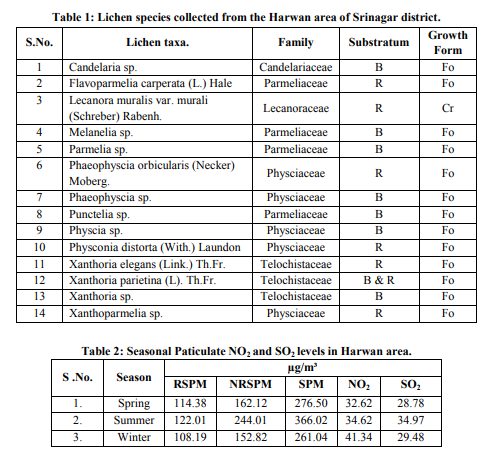
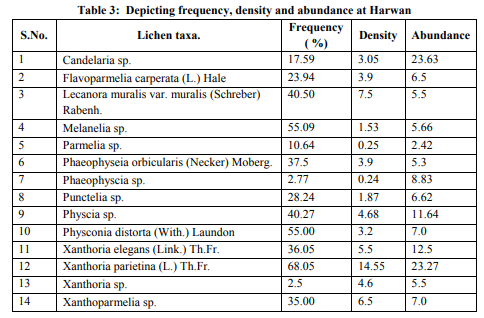
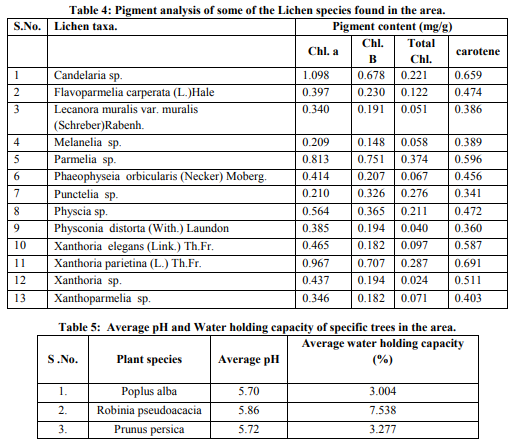
|
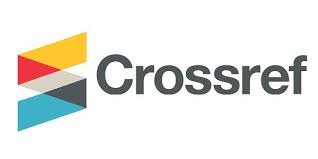



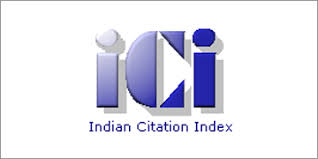

 This work is licensed under a Creative Commons Attribution-NonCommercial 4.0 International License
This work is licensed under a Creative Commons Attribution-NonCommercial 4.0 International License